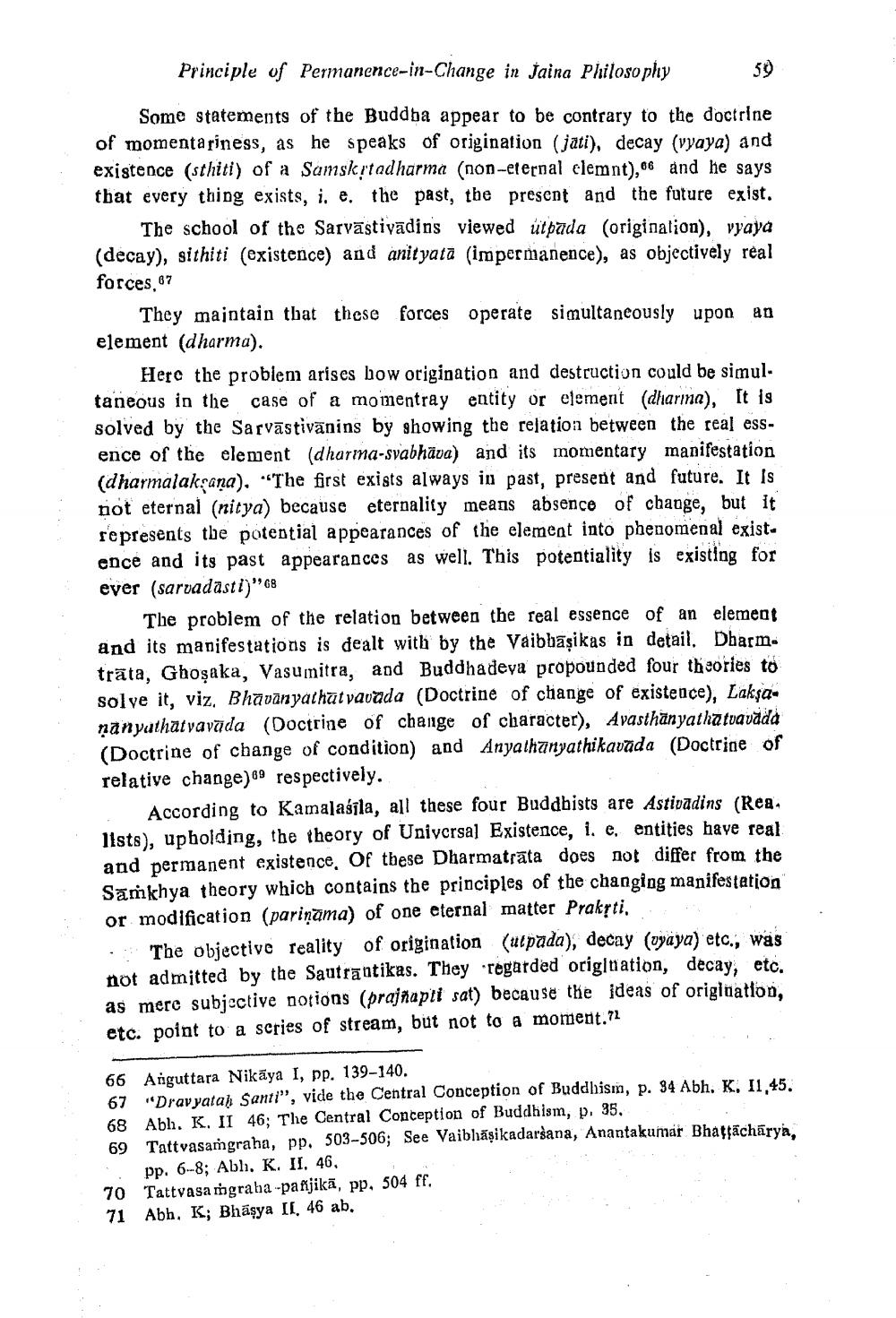________________
Principle of Permanence-in-Change in faina Philosophy
Some statements of the Buddba appear to be contrary to the doctrine of momentariness, as he speaks of origination (jati), decay (vyaya) and existence (sthiti) of a Samskrtadharma (non-eternal elemnt), and he says that every thing exists, i, e. the past, the present and the future exist.
The school of the Sarvāstivādins viewed utpada (originalion), vyaya (decay), sithiti (existence) and anityata (impermanence), as objectively real forces,67
They maintain that these forces operate simultaneously upon 10 element (dharma).
Here the problem arises bow origination and destruction could be simultaneous in the case of a momentray entity or element (dharma), It is solved by the Sarvāstivānins by showing the relation between the real essence of the element (dharma-svabhäva) and its momentary manifestation (dharmalaksana), “The first exists always in past, present and future. It is not eternal (nitya) because eternality means absence of change, but it represents the potential appearances of the element into phenomenal exist. ence and its past appearances as well. This potentiality is existing for eyer (sarvadasti)"68
The problem of the relation between the real essence of an element and its manifestations is dealt with by the Vaibhāşikas in detail. Dharm. träta, Ghoşaka, Vasumitra, and Buddhadeva propounded four theories to solve it, viz, Bhavanyathutyavada (Doctrine of change of existence), Laksananyathatvavada (Doctrine of change of character), Avasthanyathatvavada (Doctrine of change of condition) and Anyathunyathikavada (Doctrine of relative change) 69 respectively.
According to Kamalassla, all these four Buddhists are Astivadins (Rea. lists), upholding, the theory of Universal Existence, i. e, entities have real and permanent existence. Of these Dharmatrāta does not differ from the Samkhya theory which contains the principles of the changing manifestation or modification (parinama) of one eternal matter Prakrti,
The obiective reality of origination (tilpada), decay (uyaya) etc., was not admitted by the Sautrātikas. They regarded origltation, decay, etc. as mere subjective notions (prajnapti sat) because the ideas of origination. etc. point to a scries of stream, but not to a moment.72
66 Auguttara Nikaya , pp. 139-140. 67 "Dravyatah Santi, vide the Central Conception of Buddhism, p. 34 Abh, K. 11.45. 68 Abh. K. II 46; The Central Conception of Buddhism, p. 35. 69 Tattvasamgraha, pp. 503-506; See Vaibhăşikadarsana, Anantakumar Bhattacharya
pp. 6-8; Abl, K. II. 46. 70 Tattvasa mgraba -panjikā, pp. 504 ff. 71 Abh, K; Bhāşya II. 46 ab.




